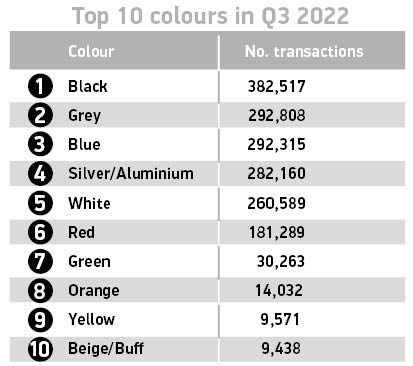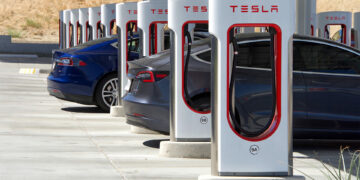The UK’s used car market fell for the second consecutive quarter this year, declining 12.2% over the three months of July to September, according to the latest figures from the Society of Motor Manufacturers and Traders (SMMT).
Some 1,785,447 vehicles changed hands, the first time that third quarter transactions have dipped below two million since 2015, as semiconductor shortages impacted supply of stock. In the year to date, sales are now down 9.7% to 5,319,482, said the SMMT.
Used BEV sales bucked the trend, however, with the third quarter reflecting growth in the electrified new car market as activity rose 44.1% to 16,775 transactions, adding up to 48,032 in the year to date. The market for used hybrid EVs also grew 2.5% in the quarter with 41,479 cars finding new owners, taking the yearly total so far to 119,722.

Plug-in hybrid EV transactions, meanwhile, fell 5.8% to 13,899 in the quarter under review, though they remain up 7.1% since January at 44,724. It means that, driven by an ever-growing choice of zero emission capable models reaching the used car arena, combined transactions for electrified vehicles reached 4.0% market share in the third quarter, up from 3.3% a year before.
Used petrol and diesel vehicles continued to dominate, however, totalling 1,708,299 transactions in the third quarter with petrol taking the lion’s share of the total market at 57.1%, the figures by SMMT explained.

Black continued to prove the most popular used car colour, accounting for more than a fifth of the market, ahead of grey which moved into second place – up from fourth this time last year – while blue remained in third. Demand for silver vehicles fell by 18.0%, the most for any colour, as it slipped from second to the fourth best seller this quarter.
“The demand is clearly there and to feed it we need a buoyant new car market, which means giving buyers confidence to invest,” Chief Executive of SMMT Mike Hawes said. “Next week’s Autumn Statement is an opportunity for the government to make a long-term fiscal commitment to zero emission motoring, including adequate public charging infrastructure, which, especially given the economic headwinds, would go a long way to stimulating the market and delivering both economic and net zero progress.”

















Discussion about this post